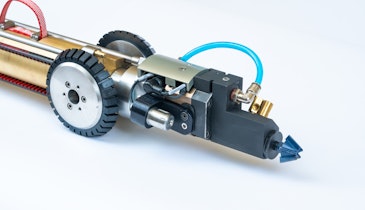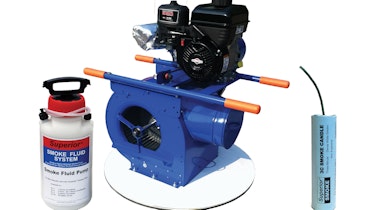A nationwide multidistrict litigation bellwether lawsuit addressing PFAS contamination, which had been set to start trial June 5, has been postponed so the parties can focus on settlement negotiations.
The lawsuit was filed by approximately 400 water and wastewater systems, and is part of a larger grouping of over 2,500 cases. However, the court has chosen the water provider cases as the initial bellwether trials.
Bellwether trials are employed to resolve legal and factual issues that are applicable to most cases under similar circumstances. If these test cases yield favorable outcomes, it can expedite proceedings for the larger group of plaintiffs and potentially set in motion a series of subsequent court settlements or judgments.
Ken Sansone, a partner with SL Environmental Law Group, exclusively represents water suppliers in contamination lawsuits. Sansone talked about PFAS, the important MDL case and its potential impact, and more in an interview with Municipal Sewer & Water.
MSW: What’s your role in this multidistrict litigation?
Sansone: My firm, SL Environmental, is part of a group of firms handling these cases. Our experience working with water systems has given us a good understanding of how contaminants affect water systems and what various treatment scenarios would cost depending on a number of factors. It can be a very complicated analysis and the damages — the ultimate costs — are a very significant issue that is often hotly disputed in these cases. Defendants often claim the problem can be fixed more cheaply and it’s important for us to see that our clients are protected. If they do get recoveries in these cases, we want to make sure these take into account all the various expenses our clients could face as a result of these contaminants. That’s our role and our co-counsel have a lot of experience in taking PFAS contamination cases to trial.
Also, they have a deep background in the liability side of the case. 3M, DuPont and some other manufacturers with a history of working with these chemicals and knowledge of their risks have tried to conceal those risks from regulators, from their customers and from the public. There are decades of internal documents and other materials, and that is a very important part of the story that ultimately the jury in the bellwether case would hear.
We represent about 150 water systems that have filed cases over contamination of their drinking water supplies as part of the multidistrict litigation. I’m in charge of all of the lawsuits SL Environmental is handling for our clients and many of those are PFAS lawsuits. We’ve been doing this for about 15 years and we’ve focused almost exclusively on representing water providers in contamination cases.
MSW: Would you explain more about an MDL?
Sansone: A multidistrict litigation, or MDL, is a procedure that the federal court system uses when many different plaintiffs sue the same defendant or group of defendants for the same thing. In this instance, there are many different kinds of plaintiffs affected by PFAS exposure in one way or another. Not only water systems and contamination of their supplies, but also wastewater utilities with PFAS in their wastewater streams or biosolids, or airport operators with soil contamination from their use of PFAS-containing firefighting foam at their airports. This also includes individuals whose private wells are contaminated with PFAS or who have been exposed to PFAS in products they use, like firefighters for example. All these different plaintiffs brought lawsuits against the manufacturers — 3M, DuPont and a small group of other manufacturers of the firefighting foam and the compounds it contained — in different courts throughout the country. Under the multidistrict litigation procedure, they all were consolidated into a single proceeding in federal district court in Charleston, South Carolina, Judge Richard Gergel presiding.
MSW: What is the significance of bellwether trials and how they could potentially impact the outcome of the cases that are pending?
Sansone: There are approximately 2,500 cases pending in the MDL, including around 400 cases involving water systems. The bellwether trial is really the water system bellwether trial. Other cases brought by other kinds of plaintiffs present different issues. The water system bellwether case is intended to be representative of the typical water system case that’s been filed in the MDL and the purpose of the bellwether is to serve as a test case. This is the first case over water contamination from PFAS from products like AFFF (firefighting foam) that’s been taken to trial. These are what we call product liability cases where a manufacturer is legally responsible for the harm that its product causes, if the design of the product is defective or if the manufacturer failed to warn about non-obvious dangers in its products.
So much of the contamination caused by firefighting foam was from its use in training activities, rather than putting out actual fires. That resulted in the PFAS and the foam getting into the soil and into the local water supplies. That’s what we claim happened in the city of Stuart (Florida). The jury is going to hear the evidence and decide whether we’ve proven that the manufacturers are responsible, and if so, what damages should be awarded. That will give everyone, both the plaintiffs and the defendants, an idea of what is likely to happen if these cases go to trial. What is likely to happen when a case goes to trial is plaintiffs and defendants and their lawyers try to settle cases. The bellwether trial will serve as a data point that will, we hope, allow an attempt at a global settlement of all the water system cases.
MSW: What legal precedents exist with regard to PFAS contamination and how do they apply to the present litigation?
Sansone: There have been a fair number of legal rulings that Judge Gergel has made. I think the most important one was his ruling that 3M and the other foam manufacturers were not entitled to assert what’s known as the government contractor defense, which is a legal doctrine holding that when a private company makes a product at the direction of the federal government, typically the military, people injured by the product can’t sue the manufacturer. It essentially entitles the manufacturer to the sort of sovereign immunity that the government would otherwise enjoy.
MSW: What do the plaintiffs hope to achieve with this litigation? Is it just about monetary compensation, or is there a larger goal, such as changes in environmental regulations or accountability from the entities that caused the contamination?
Sansone: I think there are a few goals but the most important one is about fairness and ensuring that the costs of remediating PFAS contamination are borne by the manufacturers responsible for it. Another important goal is to encourage manufacturers of these chemicals to recognize the enormous effect their business practices can have on the environment. Just about everyone in the world has PFAS in their blood at some level. You can take blood from a polar bear north of the Arctic Circle and it will probably have PFAS in it.
MSW: How long have you been involved in PFAS cases?
Sansone: My firm has been handling PFAS cases for about eight years now. We filed some of the first cases by water systems about PFAS from products in Massachusetts back in 2017.
MSW: What are the key challenges that the defense may present in this case, and how are you preparing to counter these challenges?
Sansone: I don’t think anyone would contest that firefighting foam has been useful to the military, airports, and fire departments in extinguishing oil and chemical fires. That’s what we expect the manufacturers to focus on. But the case is not about whether AFFF is good or bad; the case is about whether AFFF that contains PFAS is good or bad. Even more importantly, it’s about the failure to warn the firefighters who were using AFFF that they shouldn’t train with it by spraying it all over the ground. So I would expect the trial to touch upon those themes for sure.
MSW: What is the timeline on this? Do you have any idea how long any of this takes before any big decisions are made?
Sansone: On June 4, the court postponed the start of the bellwether trial to allow the parties to focus on settlement negotiations, and to report back on their progress in three weeks. So we’ll see what comes out of that process for water systems. But that’s really only the beginning. There are all kinds of other agencies and individuals affected by PFAS. Recently, we’ve been hearing more concerns about PFAS in wastewater streams and biosolids from treatment plants.
MSW: If successful in the bellwether case, what impact might this have on future cases involving PFAS contamination?
Sansone: There are differences depending on what’s being claimed, whether it’s water contamination or personal injury, but the liability side of the cases is very similar: the knowledge that these manufacturers had about the risks and their failure to disclose those risks to anybody. We’ll see how the water systems cases are resolved, if they are, but that’s certainly going to inform how everybody thinks about these other kinds of cases, too.
MSW: What are the broader implications of this litigation for environmental law and policy, particularly in relation to chemical contamination of water supplies?
Sansone: At the state level, there are efforts to regulate or eliminate PFAS from consumer products, which is incredibly important and long overdue. But water is something that all of us drink every day so that’s why it’s been at the forefront of regulatory attention. Regulatory efforts at addressing PFAS contamination in drinking water supplies have come a long way to the point where the EPA has proposed national drinking water standards. There has been tremendous public awareness surrounding PFAS. So far, efforts to deal with these problems in the legislative arena have been bipartisan, and that’s rare.






